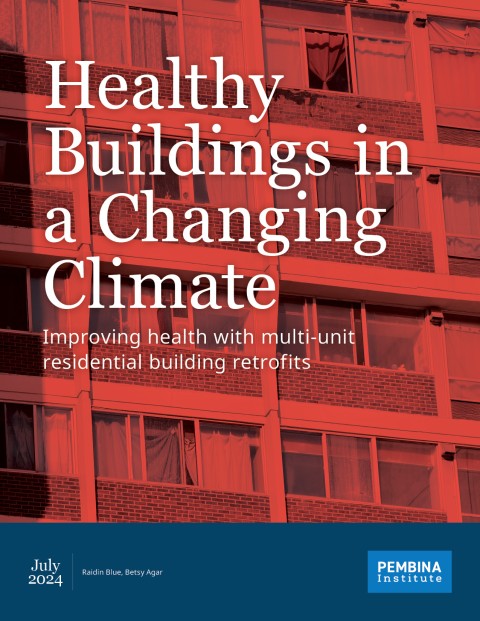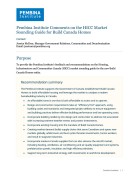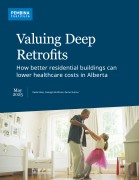Watch the video
Our latest report, Healthy Buildings in a Changing Climate, underscores the urgent need to retrofit existing buildings to protect Canadians' health and safety. As extreme weather events grow in frequency and intensity, strategic investments in deep retrofits are essential to mitigate health risks and ensure resilient homes and buildings now and for generations to come.
Buildings constructed for yesterday's climate are no longer able to handle today’s extreme weather events, such as heatwaves, flooding, and wildfire smoke. Deep retrofits, which include upgrades to ventilation, heating, cooling systems, and building envelopes, can significantly enhance occupant health and resilience. Investing in these upgrades now is crucial to safeguard our communities.
Deep retrofits offer numerous benefits beyond energy savings. They enhance occupant health, safety, and resilience to extreme weather. Improved insulation, air sealing, and smart electricity grid integration contribute to lower utility bills and reduced demand for new electricity generation. These holistic home energy efficiency upgrades also make housing more affordable by lowering heating and cooling costs.
Key findings
- Increased health risks: As extreme weather events surge, the health risks to building occupants grow. Improved ventilation and air filtration systems can protect against airborne pollutants like wildfire smoke and radon, while advanced window technologies and insulation can regulate indoor temperatures, reducing reliance on mechanical heating and cooling.
- High-return investment: Deep retrofits not only improve health and safety but also provide significant financial benefits. They make buildings more energy-efficient and affordable to heat and cool, offering a high-return investment for Canadians. Decarbonizing our homes and buildings reduces emissions while protecting against extreme weather events.
- Protecting vulnerable populations: Vulnerable groups are at greater risk due to increased sensitivity and exposure and reduced adaptive capacity, which is exacerbated for low-income households. Prioritizing retrofitting efforts for these populations is essential to ensure equitable health outcomes.
Report recommendations
- Governments and utilities: Should provide incentives and concierge services and include resilience measures in codes and standards to support deep retrofits.
- Insurance and investment sectors: Must develop products that reward building owners for investing in upgrades that reduce health and safety vulnerability.
- Building owners: Need to collaborate proactively with occupants to identify vulnerabilities and exposure risks and implement appropriate climate adaptation measures.
Effective retrofitting requires coordinated efforts from all sectors. Governments, utilities, insurance, and investment sectors, along with building owners, must collaborate to proactively plan to improve occupant health and safety. This includes incorporating climate adaptation measures into capital renewal plans, developing financial products that reward proactive adaptation, and offering public incentives to ease the costs of deep retrofits.
Our report provides a starting block for understanding the relationship between our homes and our health, in the hopes of making our homes and buildings reliable, climate-safe, and more affordable to heat and cool. By investing in deep retrofits, we can protect Canadians from the growing threats of climate change, ensure healthier living environments, and support a sustainable future.












